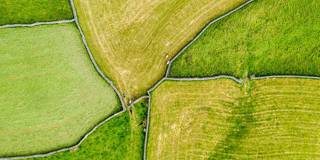While it is well known that reducing global carbon emissions to net-zero will require widespread economic change, far too little attention has been paid to the issue of land use. The green transition will require a fundamental reconsideration of how we apportion rights to the planet's surface.
LONDON – “How Much Land Does a Man Need?” asks Leo Tolstoy in a short story about a former serf named Pahom, who greedily accumulates land in czarist Russia’s equivalent of the American frontier. In the end, Pahom’s servant answers the question as he buries his master with the same spade used to mark his vast property: “Six feet from his head to his heels was all he needed.”
Pahom’s pursuit of land came after Russia’s 1861 Emancipation Reform, which freed the serfs while keeping political power in aristocratic hands. Because land ownership was still the sole measure of economic worth, emancipation triggered a land rush. But Tolstoy’s Russia was already behind the times. The old land economy was approaching its twilight, and industrialization would soon bring about a profound transformation.
Just a few decades after Tolstoy’s story appeared in 1886, agriculture – humanity’s dominant activity since the start of the Neolithic Period – had been replaced by industrial production. With the spread of the Second Industrial Revolution (railroads, telegraph, and mass production of consumer goods, from bicycles to cheap books), asset management came to focus primarily on marginal productivity. Value was to be determined in competitive free markets by consumers’ preferences, not by the ownership of empty lands.

LONDON – “How Much Land Does a Man Need?” asks Leo Tolstoy in a short story about a former serf named Pahom, who greedily accumulates land in czarist Russia’s equivalent of the American frontier. In the end, Pahom’s servant answers the question as he buries his master with the same spade used to mark his vast property: “Six feet from his head to his heels was all he needed.”
Pahom’s pursuit of land came after Russia’s 1861 Emancipation Reform, which freed the serfs while keeping political power in aristocratic hands. Because land ownership was still the sole measure of economic worth, emancipation triggered a land rush. But Tolstoy’s Russia was already behind the times. The old land economy was approaching its twilight, and industrialization would soon bring about a profound transformation.
Just a few decades after Tolstoy’s story appeared in 1886, agriculture – humanity’s dominant activity since the start of the Neolithic Period – had been replaced by industrial production. With the spread of the Second Industrial Revolution (railroads, telegraph, and mass production of consumer goods, from bicycles to cheap books), asset management came to focus primarily on marginal productivity. Value was to be determined in competitive free markets by consumers’ preferences, not by the ownership of empty lands.